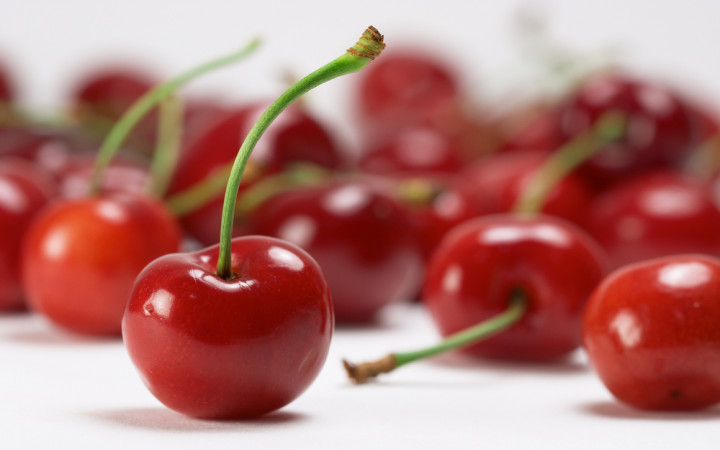Did you know that February is National Cherry Month? When you think of cherries, you might envision the sweet red treat that sits atop an ice cream sundae or a steaming hot slice of cherry pie.
You might be surprised to learn, though, that not all cherries are sweet… and not all cherries are red, either!
The cherry is the fruit of many plants of the genus Prunus. Cherries are fleshy stone fruits, which means they have a single seed (sometimes called a "stone"). The “pit" of a cherry is its seed.
While there are certainly varieties of cherries that turn a bright, vivid red, other varieties exist that appear much darker, almost purple. People often call these dark cherries “black cherries."
Rainier cherries, sometimes called “white cherries," have white flesh with a skin that turns yellowish-pink when ripe.
The bright red maraschino cherries used to top ice cream sundaes don't turn that red naturally. Producers of canned maraschino cherries use artificial dyes to ensure that their canned cherries look bright red.
The New York Times reported that some Brooklyn bees that sampled the cherry juice produced at a nearby maraschino cherry factory began to turn red and produce scarlet-colored honey. When beekeepers investigated, they learned that the bees — and their honey — were full of Red Dye No. 40, the dye used by the factory to artificially color their maraschino cherries.
Summer is fresh cherry season, but you can find canned, frozen and dried cherries throughout the year. While many people associate cherries with sweetness, tart cherries are often used in a variety of recipes, including traditional cherry pie. Tart cherries are usually canned or sold as cherry pie filling.
The United States grows more than 650 million pounds of cherries each year. Oregon and Washington produce around 60 percent of the nation's sweet cherries.
Michigan produces 75 percent of the nation's tart cherry crop. In fact, Traverse City, Michigan, is known as the Cherry Capital of the World.
Whether fresh or frozen, canned or dried, cherries provide great health benefits! Scientists consider cherries to be a nutritious “super fruit" because they contain healthy antioxidants, which can lower a person's risk for diseases, such as cancer and heart disease. The antioxidants in cherries also help the immune system and can slow the aging process.
But what about George Washington? You may have heard that he cut down a cherry tree when he was a young boy.
Why would he do such a thing? As it turns out, we don't really know for sure whether he cut down a cherry tree.
An early biography of Washington included the cherry tree story, but some suspect that the author may have made up the story for the purpose of demonstrating Washington's honesty. Isn't that ironic?




